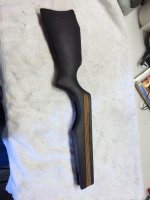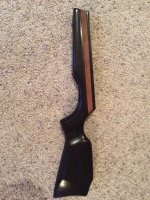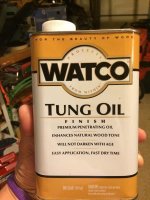WOW, I got more than I bargained for on this post. Tons of great advice.
I gave a minimum of 24 hours between coats. Usually three days. I did wait to long after on one coat. The Tung oil was partially set up by time I went to wipe it down. It smeared rather than buffed out.
I did slathered it on rather than light coats. It wiped down nicely except for the one I let sit to long. I did set it out in the sun for a day. No real noticeable difference.
I'm not sure what I'm going to do with the pellet gun stock yet. I will be following the recommendations on my next stock project.
Thank You Gentlemen
I gave a minimum of 24 hours between coats. Usually three days. I did wait to long after on one coat. The Tung oil was partially set up by time I went to wipe it down. It smeared rather than buffed out.
I did slathered it on rather than light coats. It wiped down nicely except for the one I let sit to long. I did set it out in the sun for a day. No real noticeable difference.
I'm not sure what I'm going to do with the pellet gun stock yet. I will be following the recommendations on my next stock project.
Thank You Gentlemen



